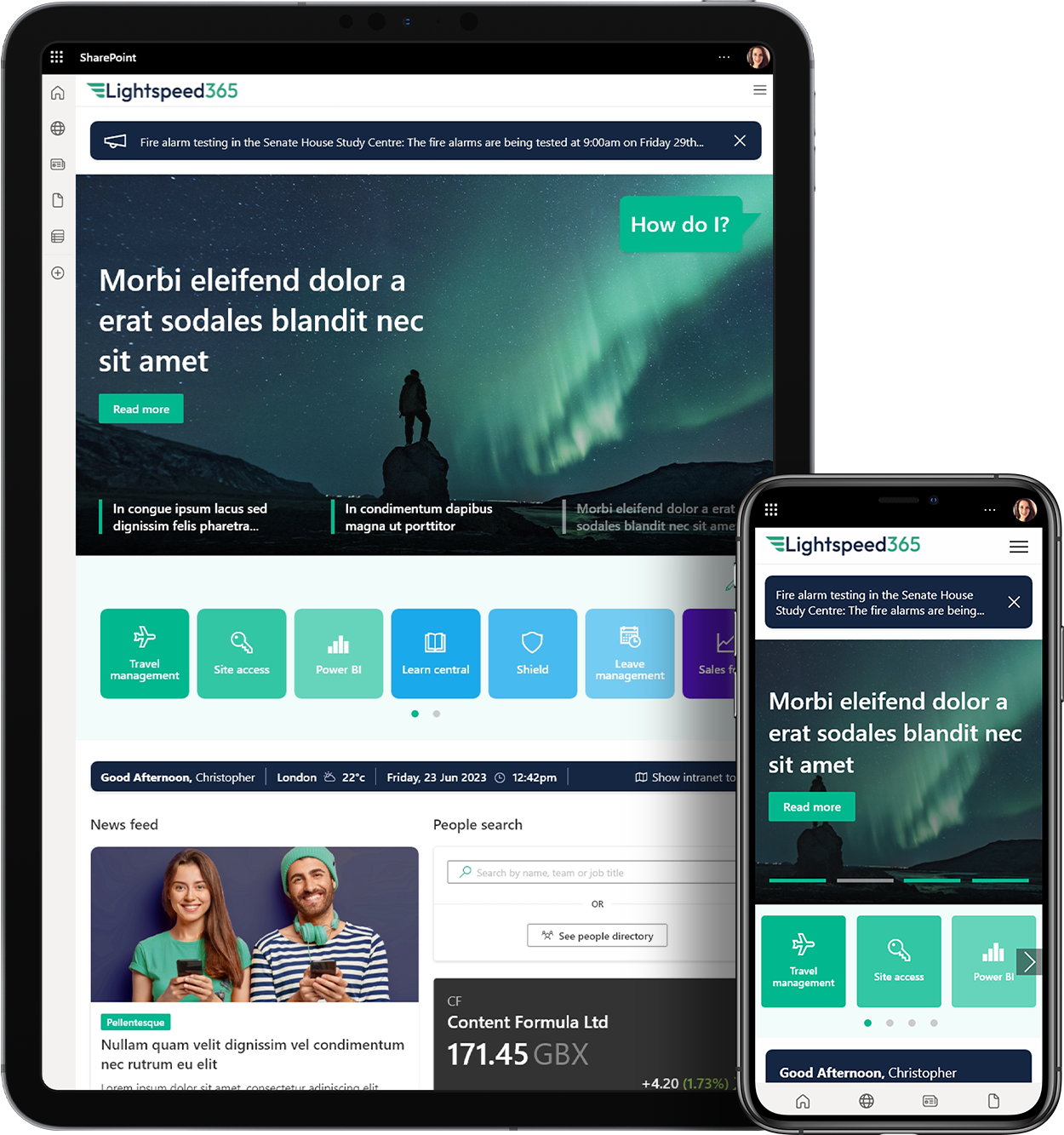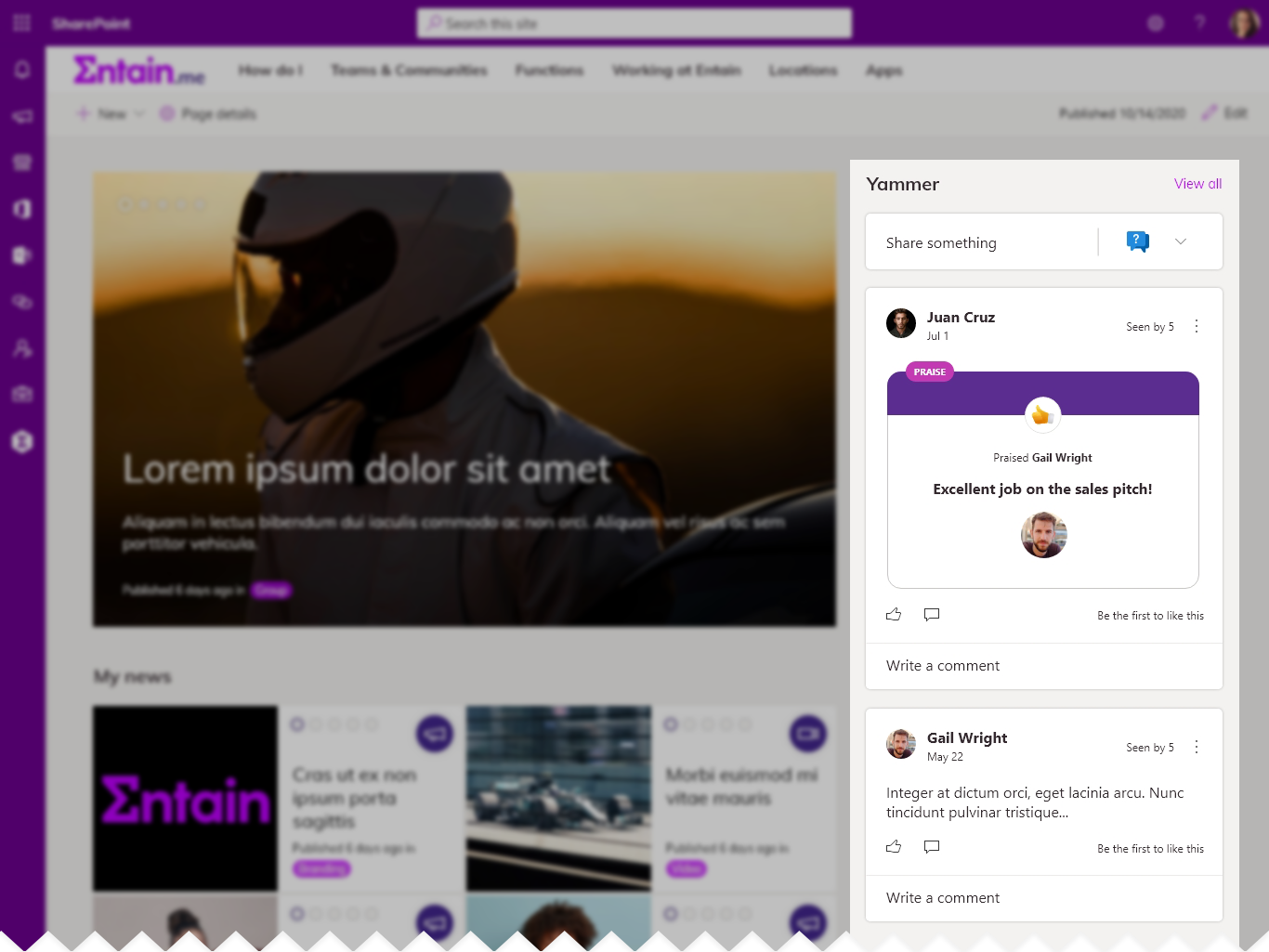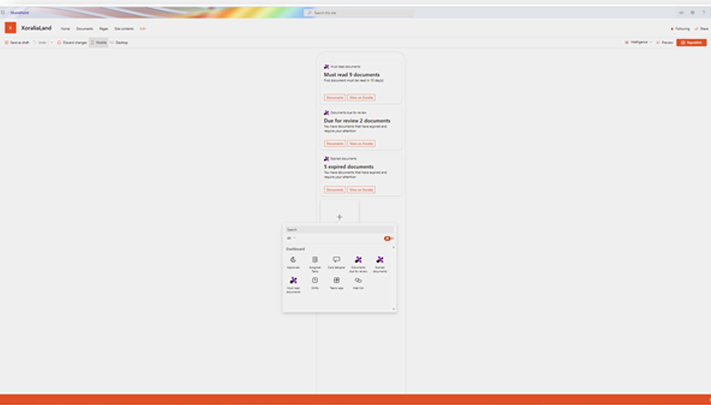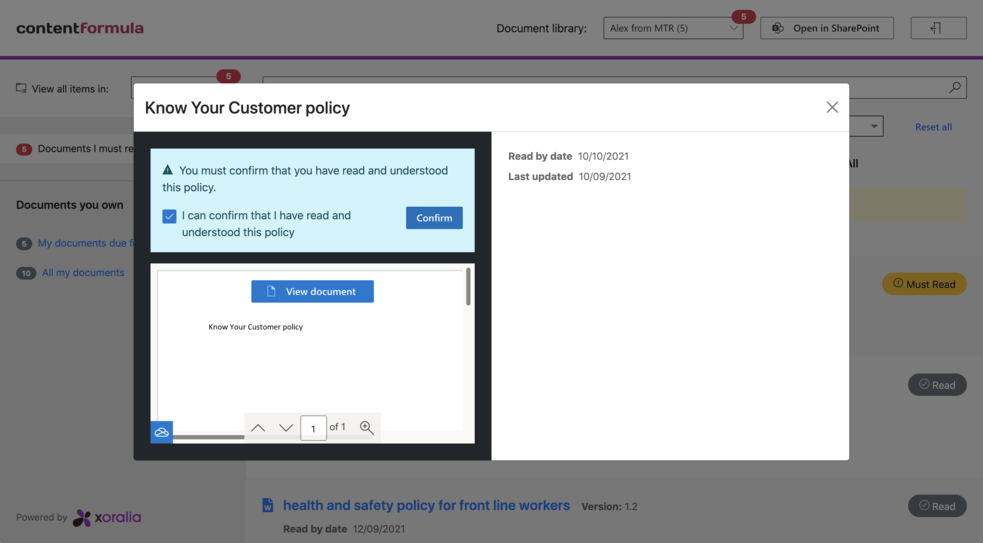Win Champagne with our Intranet Christmas crossword!
Test out your intranet knowledge with our Christmas crossword and be in with a chance to win a bottle of bubbly.
We provide comprehensive, SLA based support services for your intranet and other Microsoft-based applications.

We offer comprehensive Microsoft consultancy services to help organisations build out and optimise their digital workplace.
Find out more about our Microsoft 365 consultancy services![]()
We design and create bespoke process automation solutions to streamline business operations and improve efficiency.
Find out more![]()
We develop custom apps and integrations that are compatible with systems and tailored to meet organisational needs.
Find out more![]()
Specialist knowledge management services to help organisations derive more value form their information assets.
Find out more![]()
Lightspeed365 intranet is a set of premium webparts that significantly improve the employee experience and branding of your SharePoint intranet

At Content Formula, we have been building SharePoint intranets since 2007 and are renowed for our award winning designs.
See SharePoint intranet![]()
We build your SharePoint intranet for a fixed price with our Lightspeed365 packages.
Find out more![]()
 Our custom-built intranet service
Our custom-built intranet service For organisations with more complex requirements, we'll build a tailored intranet to meet your needs.
Find out more![]()
We are experts in Microsoft technologies and deliver market leading consultancy and development services on: SharePoint, Microsoft 365, Teams, Power Platform and Azure.

We are a digital workplace consultancy and Microsoft Partner that specialises in delivering technology solutions and services to help people transform their digital workplace.
See SharePoint intranet design examples![]()
Test out your intranet knowledge with our Christmas crossword and be in with a chance to win a bottle of bubbly.

Intranet bots are likely to be the next big thing in intranets. Here are my three top reasons for why it won’t take long for the technology to catch on and why intranet managers should be dipping their toe in now.
As the exclusive UK partners for Wizdom we are thrilled to see it do so well in the latest Clearbox Consulting review of 26 SharePoint intranet-in-a-box products.

Microsoft has just announced a major addition to the Office 365 digital workplace. Its called Microsoft Teams. In a nutshell it provides a single place where teams can connect, chat, share and collaborate. But does it spell the end of Yammer?

Listening to your intranet users is important, but you have to be able to put it all together in a structured business case so that you raise the money and give people what they need.
Aimed at intranet managers and comms professionals, the annual Intranet Now conference took place on Friday 30th September 2016 in London. Here are some tweets by us and by others that we thought you might find interesting.

Sometimes customers ask simple but great questions: “What are the big intranet trends I need to be aware of as I consider rebuilding our corporate intranet?. As intranet practitioners its very easy to become immersed in detail and forget the bigger picture. This question made me think.
Faceted navigation is a key part of a SharePoint intranet’s search engine. It helps users filter search results using a pre-defined classification system. Our SharePoint search consultant partner Agnes Molnar of Search Explained talks about getting refiners right on your intranet.
When well integrated, SharePoint and Yammer gives a boost to communication and collaboration. But Microsoft doesn’t do all the integration you might require.
Download our engagement framework for seven themes to address when rolling out new ways of digital working.
Book in a live demo with us to discuss your project and find out more about our services, solutions and how we can add value to your digital workplace. Simply fill out the form and pick a time and date in our calendar.
Alternatively, if you have a question and would like more information about Content Formula, please visit our contact us page.
We look forward to meeting you.
![]() SharePoint
SharePoint
![]() Office 365
Office 365
![]() Teams
Teams
![]() Yammer
Yammer
![]() Azure
Azure
![]() Power Automate
Power Automate
![]() Power BI
Power BI
![]() LiveTiles
LiveTiles
![]() LMS365
LMS365
We use cookies to give you the best experience on our site. By continuing to use our website, you are agreeing to our use of cookies. To find more about the cookies, please see our cookie notice.
You can also read our privacy policy.